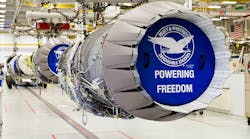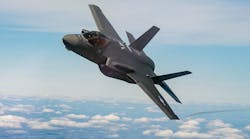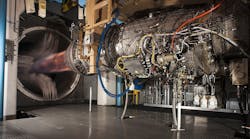Pratt & Whitney has drawn a $5.7-billion award from the U.S. Dept. of Defense funding more than 300 new F135 engines to power forthcoming production (Lots 12 and 13) of the F-35 Lightning II Joint Strike Fighter aircraft. As noted by P&W, this is the largest F135 production contract to date, and includes program management, engineering support, production support, and tooling as well.
As reported by DoD, the new contract covers production and delivery of 112 F135-PW-100 engines for the U.S. Air Force; 46 F135-PW-600 propulsion systems for the U.S. Marine Corps; and 25 F135-PW-100 propulsion systems for the U.S. Navy.
The award also covers long-lead components, parts, and materials for 129 F135-PW-100 and 19 F135-PW-600 propulsion systems for non-U.S. program participants and foreign military sales customers. The work will be conducted by Pratt & Whitney in East Hartford, Conn., Indianapolis, and Bristol, England, and is expected to be completed in February 2023.
The F-35 is the Lockheed Martin-built, single-engine aircraft deployable for ground attack and combat: the F-35A is designed for conventional takeoff and landing (CTOL); the F-35B, for short take-off and vertical-landing (STOVL), and the F-35C carrier-based variants for Catapult Assisted Take-Off but Arrested Recovery (CATOBAR) variant.
The F135 is an afterburning turbofan engine developed for the F35, and it too has variants, as needed for the particular aircraft: a conventional, forward-thrust variant and a multi-cycle Short Take-Off Vertical Landing STOVL variant that includes a forward lift fan. P&W calls it “the most advanced fighter engine ever produced.”
“This is a significant milestone for the program and underscores the hard work of our joint government and industry team,” stated Matthew Bromberg, president of Pratt & Whitney Military Engines. “With more than 500 F135 engines delivered to date, we’re at an exciting inflection point for the program. We are laser-focused on standing up an effective global sustainment network that will support the F135 throughout its lifecycle.”








